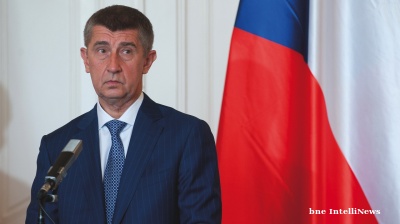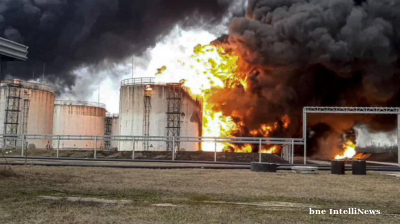Russia’s oil industry enjoyed a renaissance between 2008 and 2018 when about 30 new oil fields came online, significantly boosting production. “Almost all the fields were discovered in the Soviet period, but they could not be profitably developed because drilling technology was not sufficiently advanced, and it was too complicated to ship the oil out of such isolated areas,” said Sergey Vakulenko in a note for the Carnegie Endowment for International Peace.
Now, “there is only one project left in Russia that could theoretically offer a significant increase in production: state-owned Rosneft’s Vostok Oil.” Between 2019 and 2021, the company promoted the project heavily, claiming reserves of 6mn tonnes (45bn barrels) and targeting annual production of 115mn tonnes by 2033, with 30mn tonnes expected as early as 2024.
Vostok Oil combines the Vankor oil field cluster, a 770km pipeline to the Kara Sea, several Taymyr Peninsula fields including Payakha, Baikalovskoye and Irkinskoye, an oil terminal at Bukhta Sever, and exploration areas near Khatanga. The Vankor cluster—launched in 2009 and expanded with Suzun, Tagul and Lodochnoye—peaked at 22mn tonnes a year in 2016 but fell to 14.8mn tonnes in 2023.
Satellite imagery shows advanced construction at Bukhta Sever, with 16 tanks capable of storing 30,000 cubic metres each, suggesting a potential annual loading capacity of 25mn tonnes. “Company statements, and the pace of construction, suggest oil shipments could start in the summer of 2026,” Vakulenko said. But year-round operation would require 15 Arc7 ice-class tankers, “and Russia does not have that sort of fleet.”
Even at full capacity, “the Vankor cluster can only provide about half of the port’s 25mn tonne annual capacity,” he noted. The remainder depends on undeveloped fields at Payakha, Baikalovskoye and Irkinskoye, where satellite images show minimal activity. “It is unlikely that any meaningful production could start at the Payakha earlier than 2028.”
“At the present, Vostok Oil has effectively been reduced to the construction of a transport system to ship oil from the Vankor cluster via a port on the Kara Sea,” Vakulenko concluded. “But there’s actually no need for such a transport network: existing pipelines already allow for oil to be moved out of the Vankor cluster.”
“Either way, we can confidently state that Vostok Oil will not be producing any significant new quantities of oil over the next five years. Judging from the pace of construction, and the scale of the work at Bukhta Sever, even at its peak, production from the Payakha cluster will likely be less than 15 million tonnes a year (300,000 barrels a day). And such a production level could only be reached between five and seven years after full-scale development got underway. It’s clear that the initial plans for Vostok Oil were vastly over-ambitious,” says Vakulenko.
Opinion

COMMENT: ANO’s election win to see looser Czech fiscal policy, firmer monetary stance
The victory of the populist, eurosceptic ANO party in Czechia’s parliamentary election on October 6 will likely usher in a looser fiscal stance that supports growth and reinforces the Czech National Bank’s recent hawkish shift.

COMMENT: Ukraine's drone attacks on Russian refineries have probably reduced throughput by 30.4%, less than headline figures suggest
Ukraine has been hitting Russian refineries and caused a fuel crisis that has spead across multiple regions. The headline figure is that oil refining has been reduced by 38% since August, but digging into it and the reduction is likely less.

MACRO ADVISORY: The unintended consequences of Western sanctions
Since 2014, Western nations have hit Russia with a total of 26,655 sanctions (to mid-September 2025), with 23,960 coming after February 2022. The largest target group, with 13,611 sanctions, is state officials, business owners, and oligarchs.

PANNIER: Few will mourn passing of Turkmen Iron Lady Atajanova and Uzbek Grey Cardinal Jurabekov
Their deaths seem to have been conveniently overlooked for the most part by the authorities of today.
_Cropped_1759411324.jpg)


